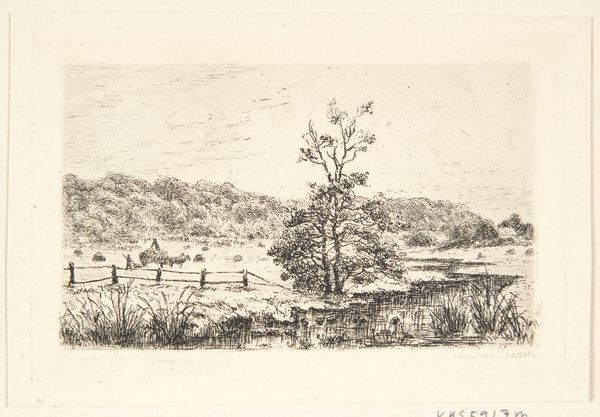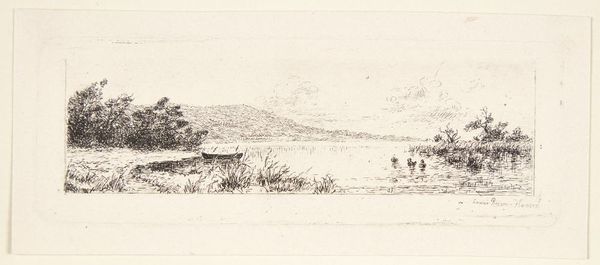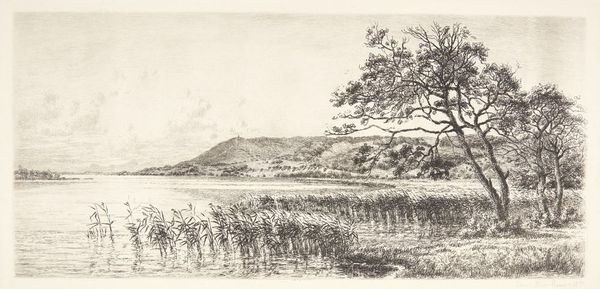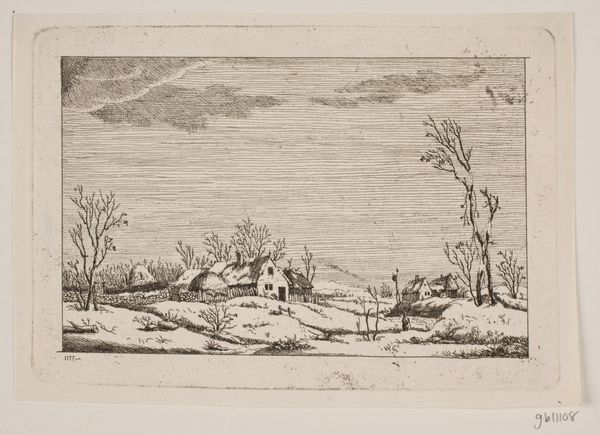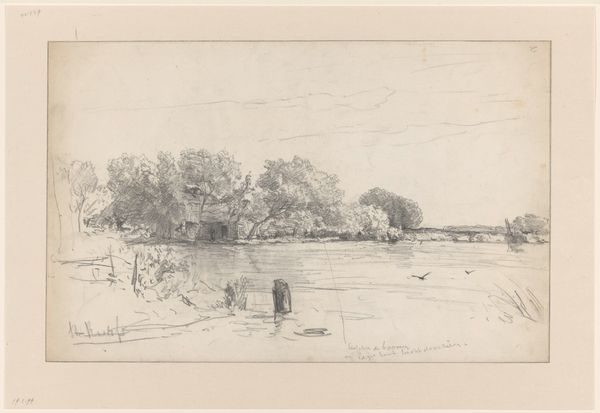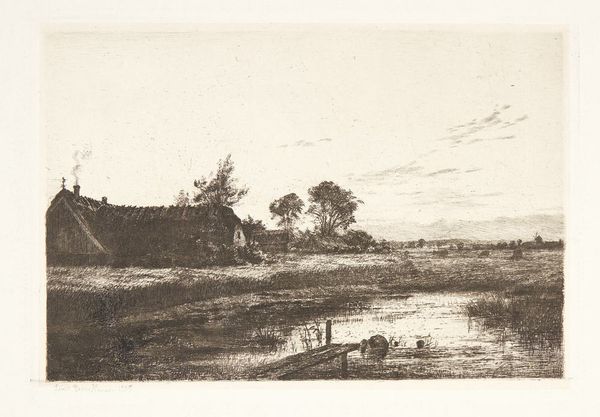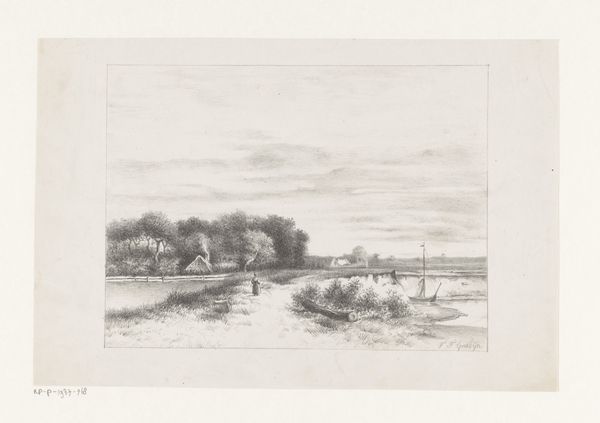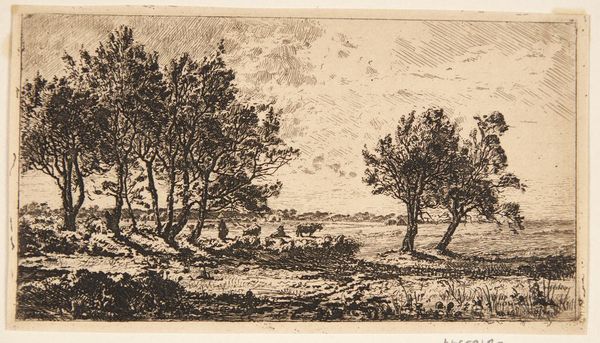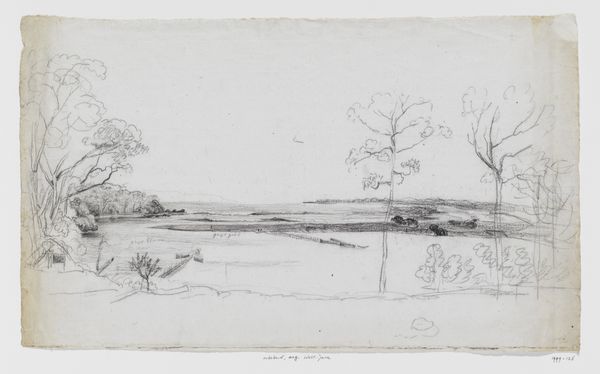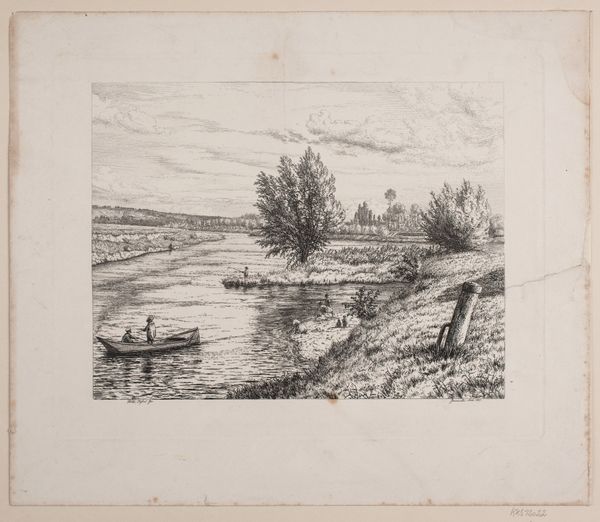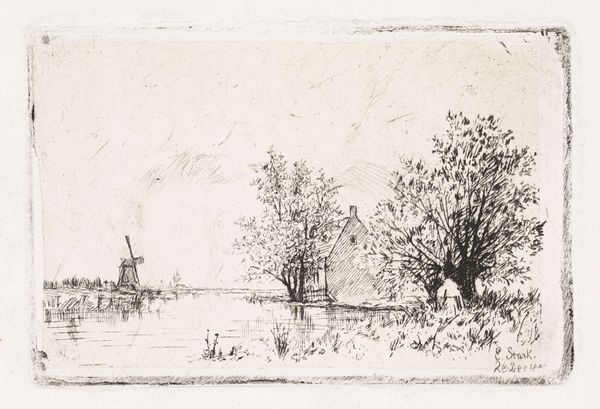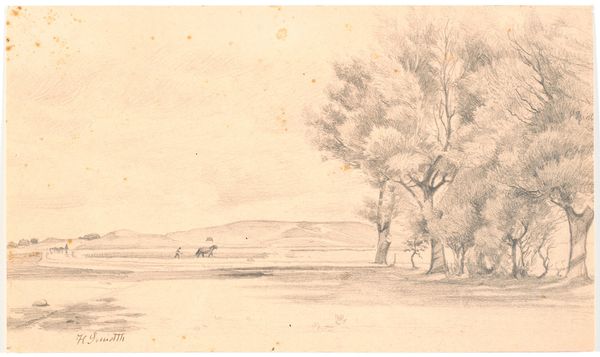
print, etching
# print
#
etching
#
landscape
#
winter
#
line
#
realism
Dimensions: 70 mm (height) x 149 mm (width) (plademål)
Curator: Looking at Louise Ravn-Hansen's "Vinterdag ved en sjællandsk sø," created between 1849 and 1909, the initial impression is one of stark, beautiful simplicity. Editor: Yes, there’s an austere, almost melancholy quality to the etching. The bare trees and expanses of white space definitely evoke a sense of cold and quiet. Curator: It’s an interesting example of realism, wouldn't you say? Ravn-Hansen has created a landscape here using printmaking. What's striking to me is the labor that went into the etched lines themselves. You see, the social history here really rests with appreciating a meticulous rendering of a specific type of landscape... it is as much a work of line as it is a landscape. Editor: I agree. And it brings to mind larger questions: who had access to such landscapes and how did they represent winter through prints like these? How might the reception of such a wintry image shift depending on the prevailing social or political climate? Were viewers drawn to the realism of it, finding comfort in an accurate depiction of the familiar world even when its bleak or even trying. Curator: I imagine there was a market for precisely this sort of image, feeding an appreciation of place and of local craftspeople. The use of etching allowed her to reach a broader audience too. Think of how different segments of society engaged with art through these affordable editions. It speaks volumes about consumer culture at the time. Editor: Absolutely, prints held significant socio-political power. The imagery reproduced here not only reflect existing norms but also molded perspectives of Danish culture, subtly but profoundly reinforcing ways of life. And, how this work eventually found its way into the collection here shapes how it's seen today! Curator: Seeing how labor and market demands converge into aesthetic expression really gives insight. It changes how we view not only landscapes of the time but the means of artwork production. Editor: Right, reflecting upon it now I appreciate how such intimate views invite us to examine and possibly reassess society’s visual rhetoric throughout history.
Comments
No comments
Be the first to comment and join the conversation on the ultimate creative platform.
